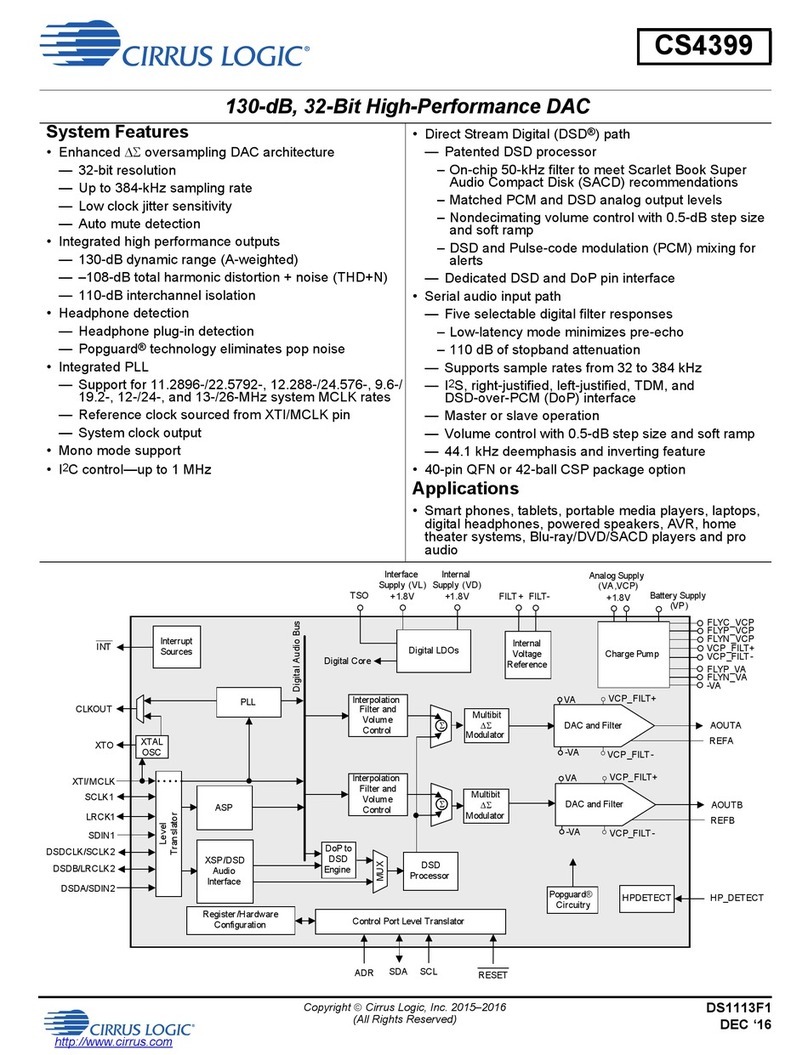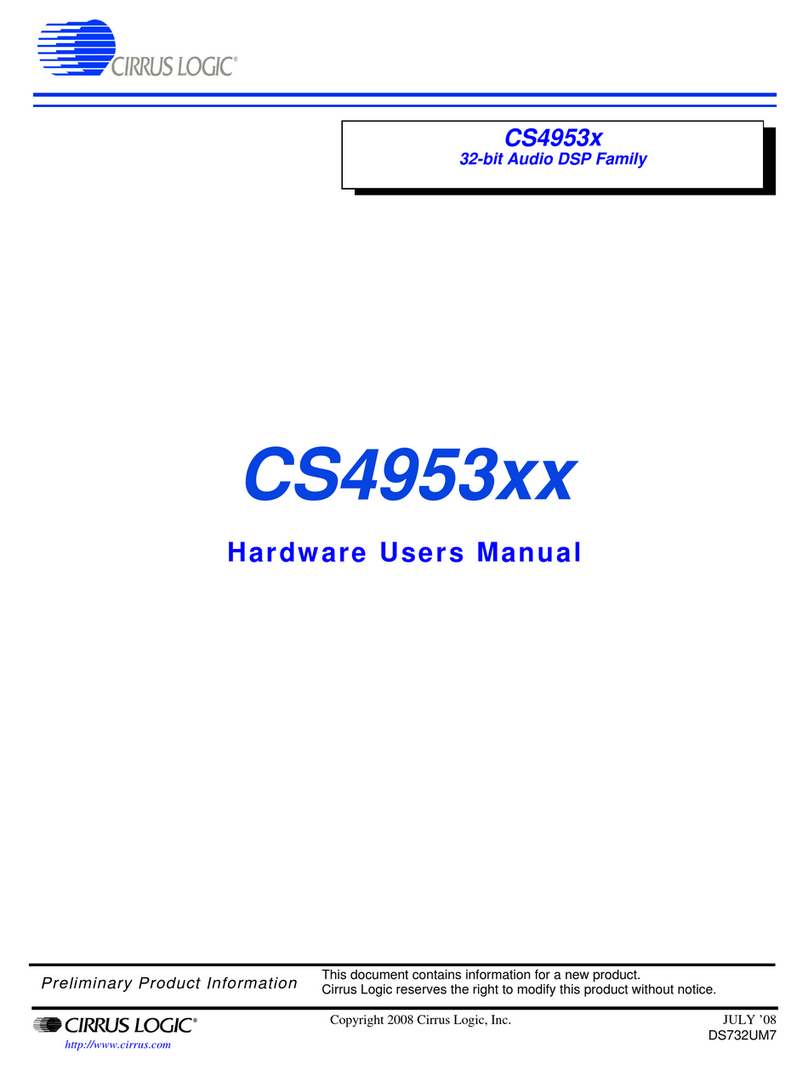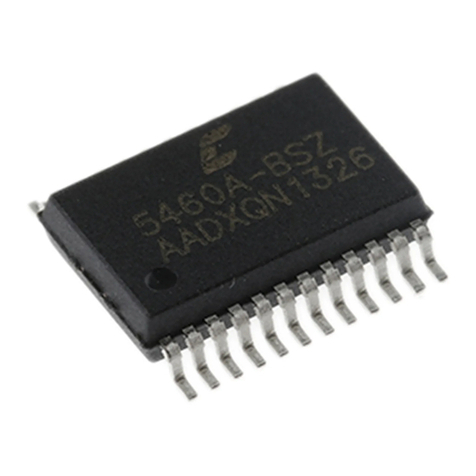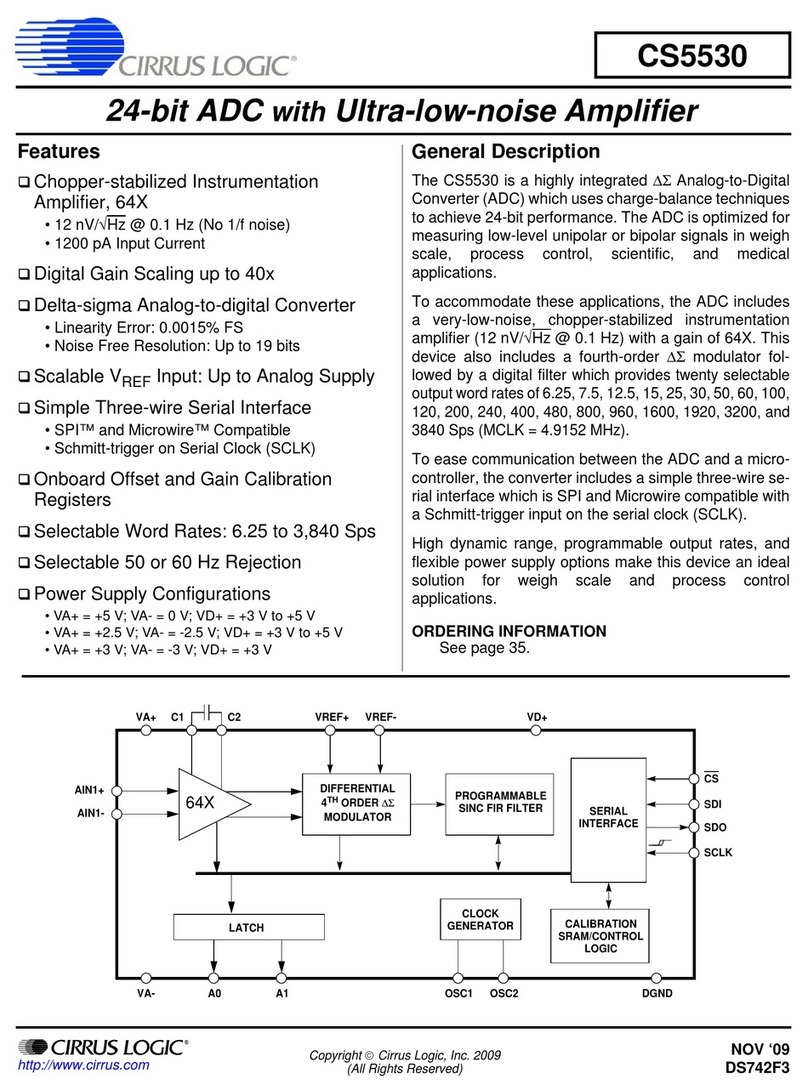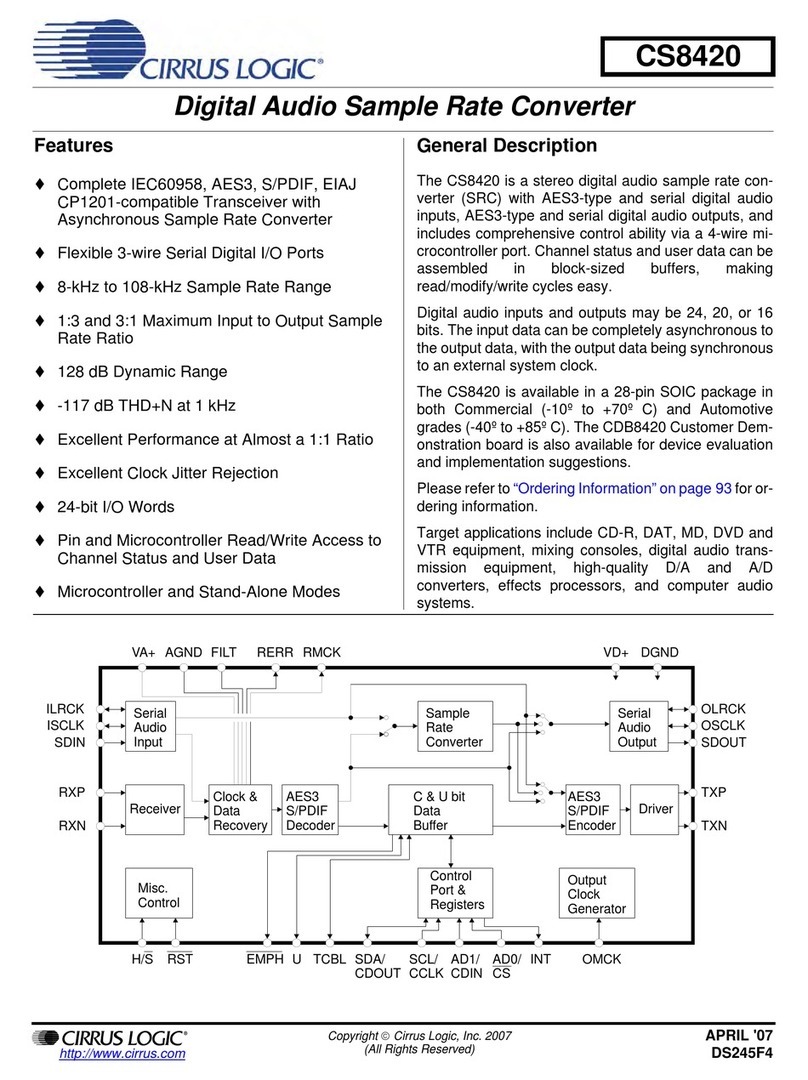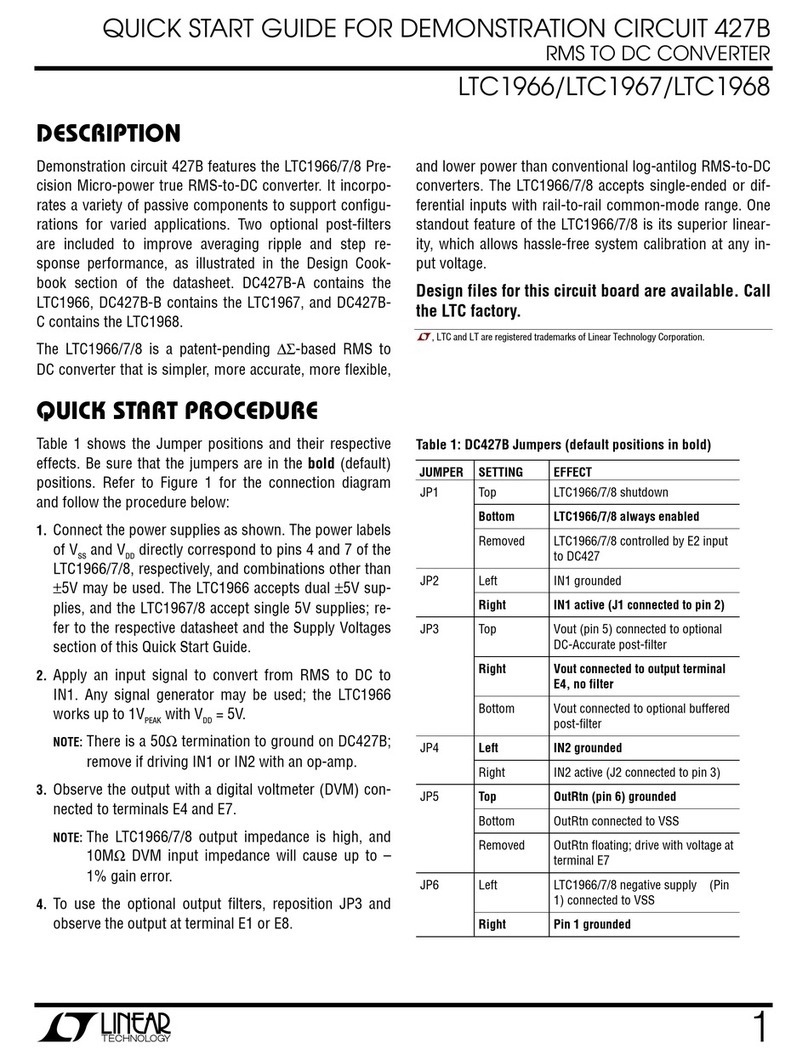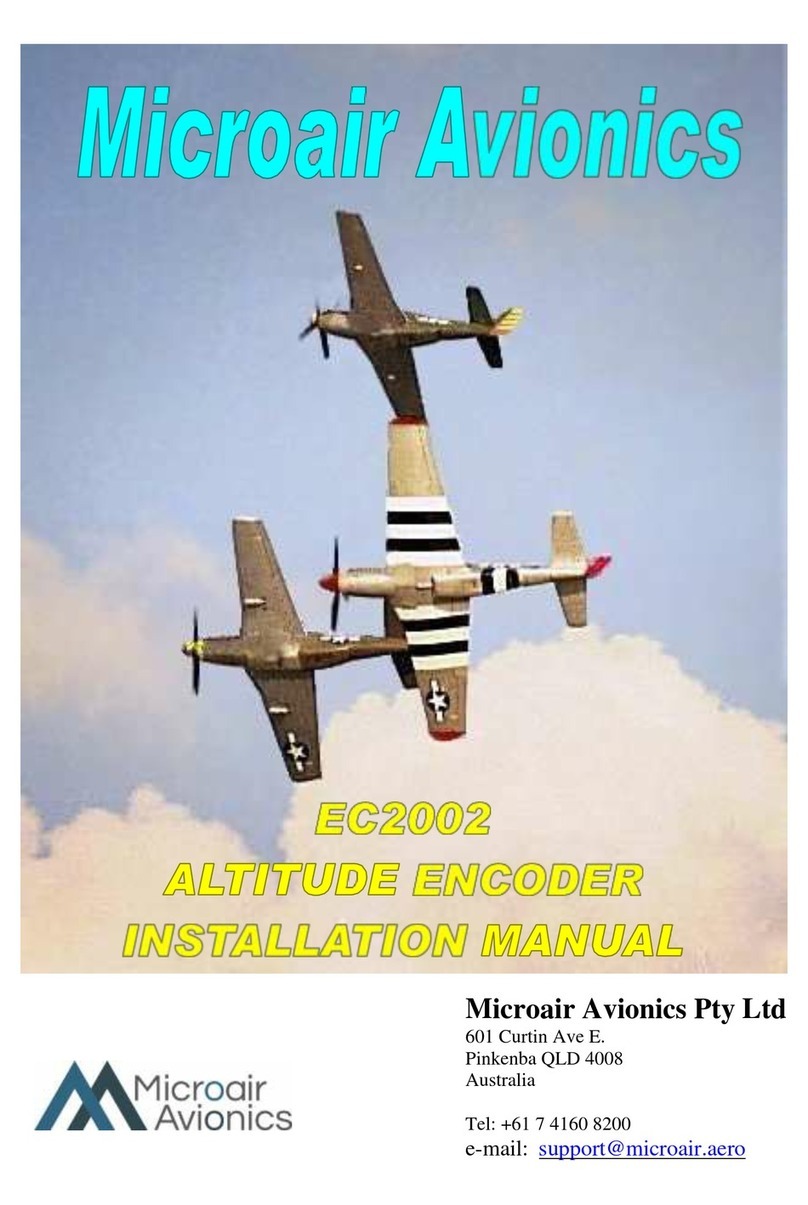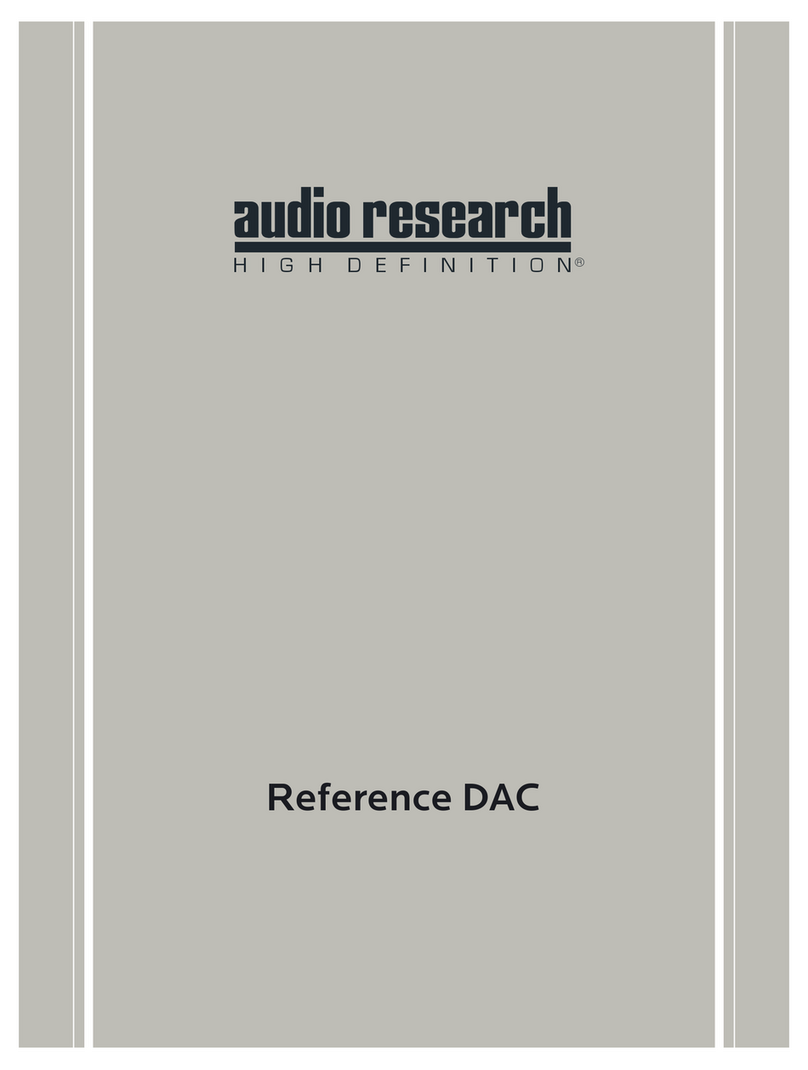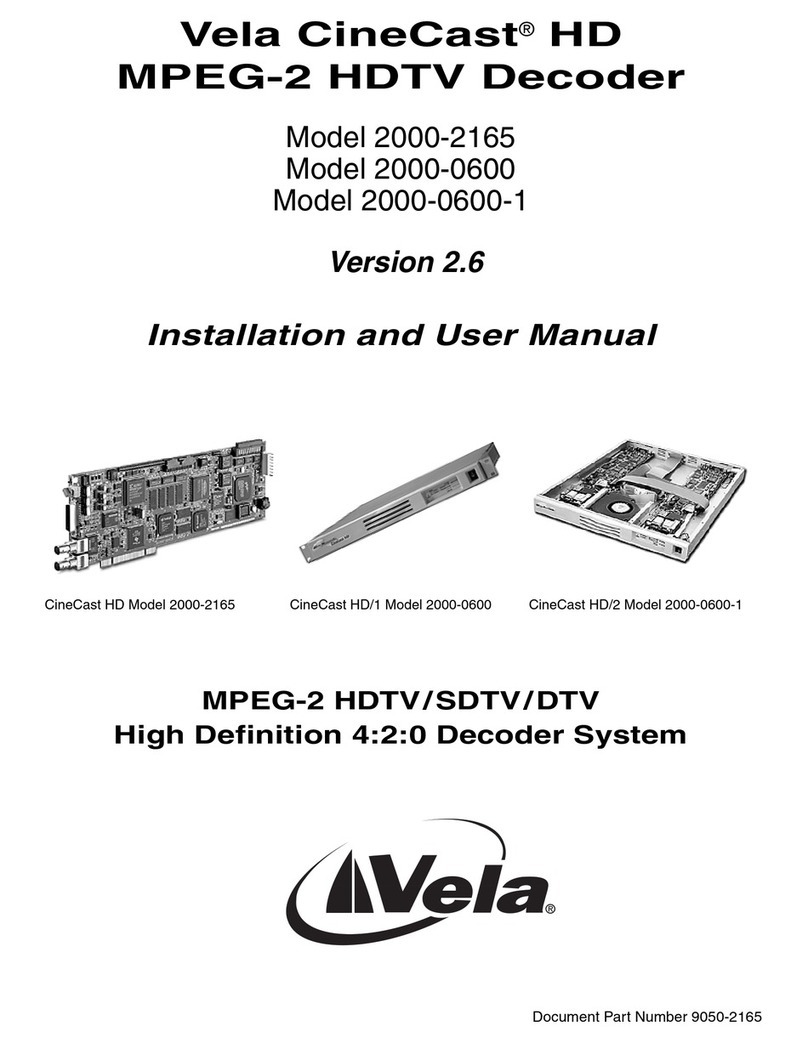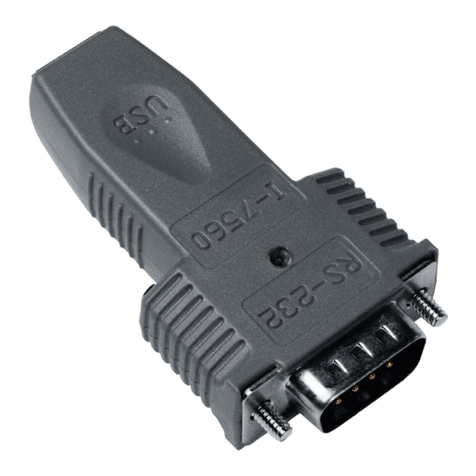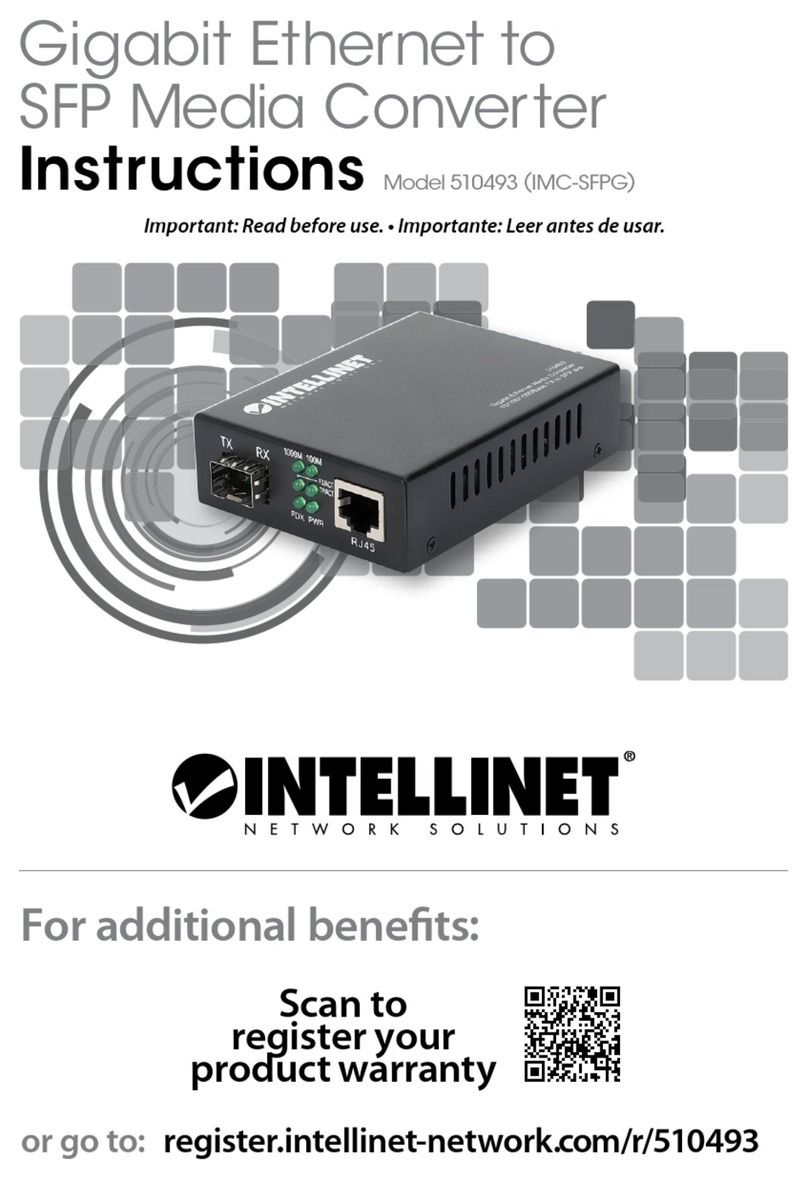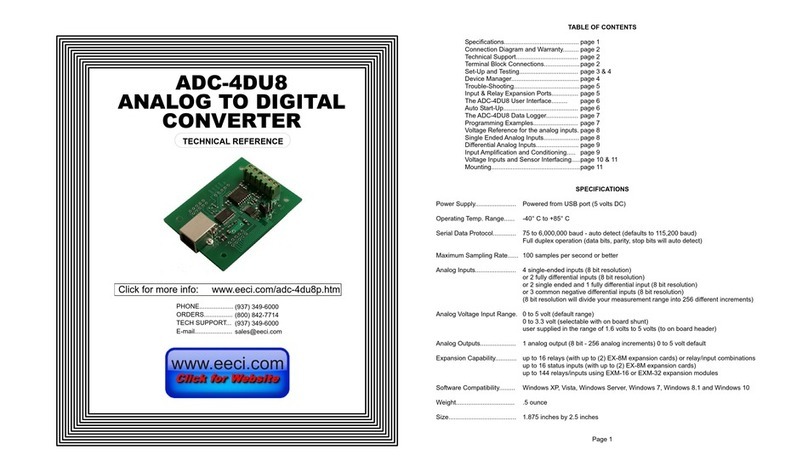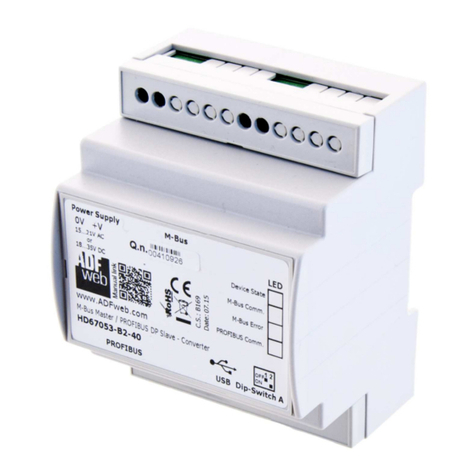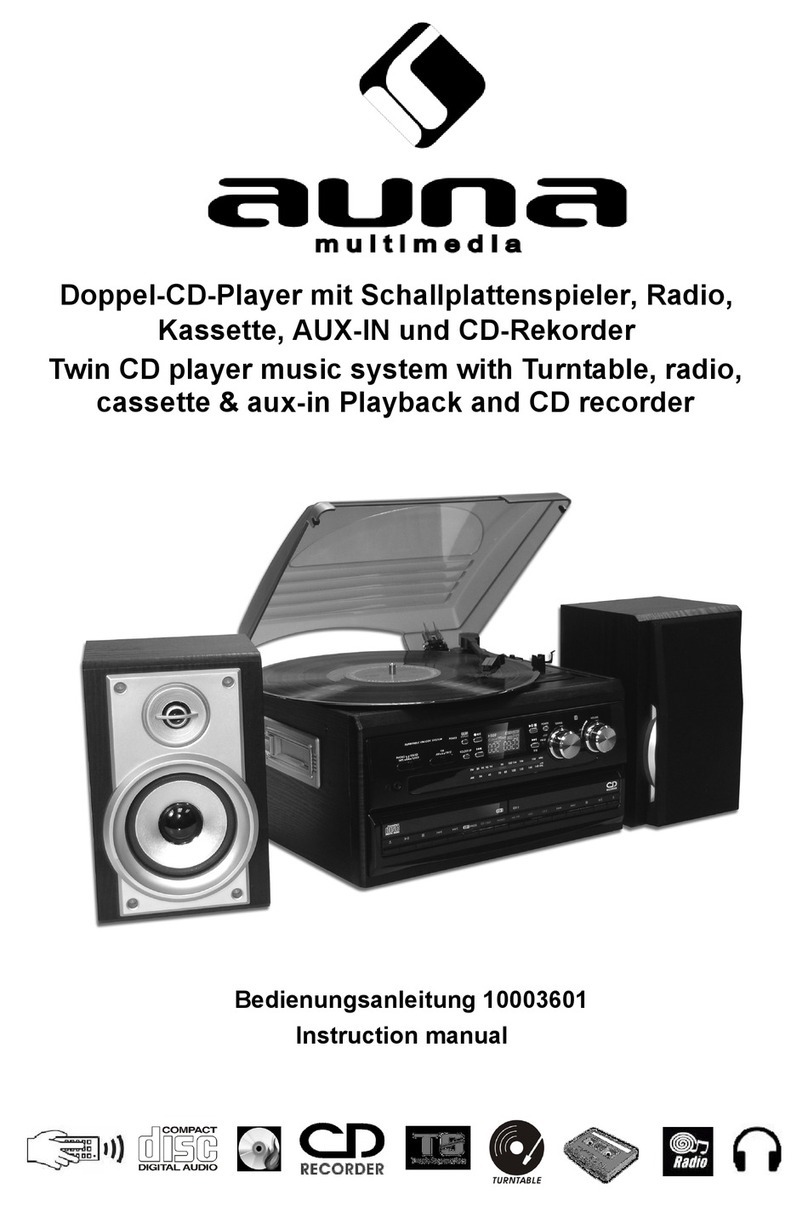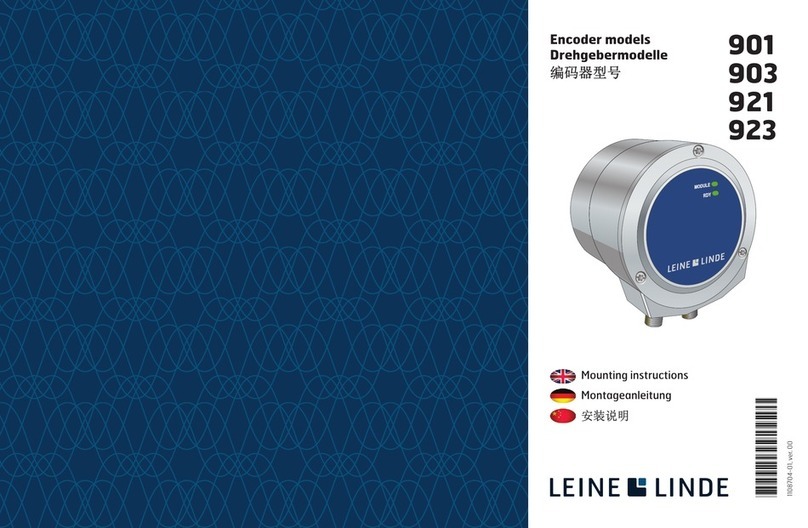Cirrus Logic CDB48500-USB User manual

©Copyright 2008 Cirrus Logic, Inc. MAY 2008
DS784DB1
High-performance, 32-bit Audio Decoder DSP Family
http://www.cirrus.com
CDB48500-USB
Evaluation Kit Guide

ii ©Copyright 2008 Cirrus Logic, Inc. DS784DB1
CDB48500--USB Evaluation Kit Guide
C
ontacting Cirrus Logic Support
F
or all product questions and inquiries contact a Cirrus Logic Sales Representative.
T
o find the one nearest to you go to www.cirrus.com
I
MPORTANT NOTICE
“
Preliminary” product information describes products that are in production, but for which full characterization data is not yet available.
C
irrus Logic, Inc. and its subsidiaries (“Cirrus”) believe that the information contained in this document is accurate and reliable. However, the informatio
n
i
s subject to change without notice and is provided “AS IS” without warranty of any kind (express or implied). Customers are advised to obtain the late
st
v
ersion of relevant information to verify, before placing orders, that information being relied on is current and complete. All products are sold subject to th
e
t
erms and conditions of sale supplied at the time of order acknowledgment, including those pertaining to warranty, indemnification, and limitation of liabilit
y.
N
o responsibility is assumed by Cirrus for the use of this information, including use of this information as the basis for manufacture or sale of any items,
or
f
or infringement of patents or other rights of third parties. This document is the property of Cirrus and by furnishing this information, Cirrus grants no licens
e,
e
xpress or implied under any patents, mask work rights, copyrights, trademarks, trade secrets or other intellectual property rights. Cirrus owns the cop
y-
r
ights associated with the information contained herein and gives consent for copies to be made of the information only for use within your organizatio
n
w
ith respect to Cirrus integrated circuits or other products of Cirrus. This consent does not extend to other copying such as copying for general distributio
n,
a
dvertising or promotional purposes, or for creating any work for resale.
C
ERTAIN APPLICATIONS USING SEMICONDUCTOR PRODUCTS MAY INVOLVE POTENTIAL RISKS OF DEATH, PERSONAL INJURY, OR SEVER
E
P
ROPERTY OR ENVIRONMENTAL DAMAGE (“CRITICAL APPLICATIONS”). CIRRUS PRODUCTS ARE NOT DESIGNED, AUTHORIZED OR WAR
-
R
ANTED FOR USE IN PRODUCTS SURGICALLY IMPLANTED INTO THE BODY, AUTOMOTIVE SAFETY OR SECURITY DEVICES, LIFE SUPPOR
T
P
RODUCTS OR OTHER CRITICAL APPLICATIONS. INCLUSION OF CIRRUS PRODUCTS IN SUCH APPLICATIONS IS UNDERSTOOD TO BE FULL
Y
A
T THE CUSTOMER'S RISK AND CIRRUS DISCLAIMS AND MAKES NO WARRANTY, EXPRESS, STATUTORY OR IMPLIED, INCLUDING THE IM
-
P
LIED WARRANTIES OF MERCHANTABILITY AND FITNESS FOR PARTICULAR PURPOSE, WITH REGARD TO ANY CIRRUS PRODUCT THAT
IS
U
SED IN SUCH A MANNER. IF THE CUSTOMER OR CUSTOMER'S CUSTOMER USES OR PERMITS THE USE OF CIRRUS PRODUCTS IN CRIT
I-
C
AL APPLICATIONS, CUSTOMER AGREES, BY SUCH USE, TOFULLY INDEMNIFY CIRRUS,ITS OFFICERS, DIRECTORS, EMPLOYEES, DISTRI
B-
U
TORS AND OTHER AGENTS FROM ANY AND ALL LIABILITY, INCLUDING ATTORNEYS' FEES AND COSTS, THAT MAY RESULT FROMOR ARIS
E
I
N CONNECTION WITH THESE USES.
C
irrus Logic, Cirrus, the Cirrus Logic logo designs, and DSP Composer are trademarks of Cirrus Logic, Inc. All other brand and product names in this do
c-
u
ment may be trademarks or service marks of their respective owners.
D
TS is a registered trademark of the Digital Theater Systems, Inc. DTS NEO:6 is a trademark of the Digital Theater Systems, Inc. It is hereby notified th
at
a
third-party license from DTS is necessary to distribute software of DTS in any finished end-user or ready-to-use final product.
S
RS, Circle Surround, and Trusurround are registered trademarks of SRS Labs, Inc. SRS Focus and Dialog Clarity are trademarks of SRS Labs, Inc. Th
e
C
IRCLE SURROUND TECHNOLOGY rights incorporated in the Cirrus Logic chip are owned by SRS Labs, Inc. and by Valence Technology Ltd., and
li-
c
ensed to Cirrus Logic, Inc.
U
sers of any Cirrus Logic chip containing enabled CIRCLE SURROUND TECHNOLOGY
®
(i.e., CIRCLE SURROUND® LICENSEES) must first sign
a
l
icense to purchase production quantities for consumer electronics applications which may be granted upon submission of a preproduction sample to, an
d
t
he satisfactory passing of performance verification tests performed by SRS Labs, Inc., or Valence Technology Ltd. E-mail requests for performance spe
c-
i
fications and testing rate schedule may be made to cslicen[email protected]m. SRS Labs, Inc. and Valence Technology, Ltd., reserve the right to decline
a
u
se license for any submission that does not pass performance specifications or is not in the consumer electronics classification.
A
ll equipment manufactured using any Cirrus Logic chip containing enabled CIRCLE SURROUND
®
TECHNOLOGY must carry the Circle Surround® log
o
o
n the front panel in a manner approved in writing by SRS Labs, Inc., or Valence Technology Ltd. If the Circle Surround
® l
ogo is printed in users manua
ls,
s
ervice manuals or advertisements, it must appear in a form approved in writing by SRS Labs, Inc., or Valence Technology, Ltd. The rear panel of Circ
le
S
urround
®
products, users manuals, service manuals, and all advertising must all carry the legends as described in LICENSOR'S most current version
of
t
he CIRCLE SURROUND Trademark Usage Manual.
D
olby, Dolby Digital, the double-D symbol, ProLogic, and Audistry are registered trademarks of Dolby Laboratories, Inc. Supply of an implementation
of
D
olby technology does not convey a license nor imply a right under any patent, or any other industrial or intellectual property right of Dolby Laboratorie
s,
t
o use the implementation in any finished end-user or ready-to-use final product. It is hereby notified that a license for such use is required from Dolb
y
L
aboratories.
I
ntel is a registered trademark of Intel Corporation.
M
otorola is a registered trademark and SPI is a trademark of Motorola, Inc.
I
2
C is a registered trademark of Philips Semiconductor Corp.
M
icrosoft, Windows, and Windows XP are registered trademarks of Microsoft Corporation.

DS784DB1 ©Copyright 2008 Cirrus Logic, Inc. iii
CDB48500--USB Evaluation Kit Guide
Contents
Figures. . . . . . . . . . . . . . . . . . . . . . . . . . . . . . . . . . . . . . . . . . . . . . . . . . . . . . . . . . . . . . . . . . . . . . . 1-iv
Tables. . . . . . . . . . . . . . . . . . . . . . . . . . . . . . . . . . . . . . . . . . . . . . . . . . . . . . . . . . . . . . . . . . . . . . . . .1-v
Chapter 1. Introduction to the CRD48500-USB Evaluation Kit..........................1-1
1.1 CDB48500-USB Kit Contents and Requirements . . . . . . . . . . . . . . . . . . . . . . . . . . . . . . . . . .1-1
1.1.1 CDB48500-USB Kit........................................................................................................1-1
1.1.2 PC Requirements...........................................................................................................1-1
1.1.3 Software Requirements..................................................................................................1-1
1.1.4 Support Hardware Requirements...................................................................................1-1
1.1.5 Cabling Requirements....................................................................................................1-1
1.2 Introducing the CDB48500-USB Customer Development Kit . . . . . . . . . . . . . . . . . . . . . . . .1-1
1.2.1 Identifying CDB48500-USB Components.......................................................................1-2
1.2.2 Related Documentation..................................................................................................1-4
1.2.2.1 Additional CDB48500 Evaluation Board Information.....................................1-4
1.2.2.2 CS485xx Family DSP Hardware Information.................................................1-4
1.2.2.3 CS485xx Family DSP Software Information..................................................1-4
1.2.2.4 DSP Software Utility Information ...................................................................1-4
1.2.2.5 Audio CODEC Information.............................................................................1-4
1.2.2.6 S/PDIF Receiver Information.........................................................................1-4
Chapter 2. Board Setup and Installing the Evaluation Kit Software.................2-1
2.1 Introduction . . . . . . . . . . . . . . . . . . . . . . . . . . . . . . . . . . . . . . . . . . . . . . . . . . . . . . . . . . . . . . . .2-1
2.1.1 Installing the Evaluation Kit Software.............................................................................2-1
2.1.2 Setting up the Evaluation Kit Boards..............................................................................2-3
2.1.3 Connecting to a PC ........................................................................................................2-4
2.1.4 Running a Stereo PCM Application on CDB48500-USB................................................2-6
2.1.5 Downloading Other Applications ....................................................................................2-6
Chapter 3. CDB48500 System Description..........................................................3-1
3.1 CDB48500 System Block Descriptions . . . . . . . . . . . . . . . . . . . . . . . . . . . . . . . . . . . . . . . . . .3-2
3.1.1 Audio Inputs....................................................................................................................3-2
3.1.1.1 Analog Line-level Inputs ................................................................................3-2
3.1.1.2 Digital Optical Input........................................................................................3-2
3.1.1.3 Digital Coaxial Input.......................................................................................3-2
3.1.1.4 Microphone Input...........................................................................................3-2
3.1.2 Audio Outputs.................................................................................................................3-2
3.1.2.1 Analog Line-level Outputs..............................................................................3-2
3.1.2.2 Headphone Output ........................................................................................3-3
3.1.2.3 Optical Digital Output (PCM) .........................................................................3-3
3.1.3 DC Power Input ..............................................................................................................3-3
3.1.4 Control Header...............................................................................................................3-3
3.1.5 On-Board Voltage Selection Headers ............................................................................3-3
3.1.6 Audio Input Source Multiplexer Selection Headers........................................................3-4
3.1.7 Cirrus Logic CS485xx Audio DSP..................................................................................3-4
3.1.8 CS8416 S/PDIF RX........................................................................................................3-5
3.1.9 CS42448 Audio CODEC ................................................................................................3-5
3.1.10 Memory.........................................................................................................................3-5
3.1.11 Audio Clocking..............................................................................................................3-5
3.1.11.1 Clock and Data Flow for up to 8 Channel ADC inputs.................................3-6

iv ©Copyright 2008 Cirrus Logic, Inc. DS784DB1
CDB48500--USB Evaluation Kit Guide
3.1.11.2 Clock and Data Flow for S/PDIF Input.........................................................3-7
3.1.11.3 Clock and Data Flow for CDB USB Master Card Source ............................3-8
Chapter 4. Configuring the CDB48500 ................................................................4-1
4.1 Introduction . . . . . . . . . . . . . . . . . . . . . . . . . . . . . . . . . . . . . . . . . . . . . . . . . . . . . . . . . . . . . . . .4-1
4.2 Basic Application Download and System Configuration for PCM Pass-through . . . . . . . .4-1
4.2.1 System Block..................................................................................................................4-2
4.2.2 Changing the Audio Input Source...................................................................................4-3
4.2.2.1 Audio In via S/PDIF .......................................................................................4-3
4.2.2.2 Audio In via 8-channel ADC...........................................................................4-3
4.2.2.3 Audio In via USB............................................................................................4-4
4.2.2.4 DAI Input of CS485xx ....................................................................................4-4
4.2.3 Changing Audio Output Configuration............................................................................4-5
4.2.3.1 DAO Output of CS485xx................................................................................4-5
4.2.3.2 CS42448 DAC Properties..............................................................................4-6
4.2.4 Changing Serial Control Protocol (I2C or SPI)................................................................4-7
4.2.5 Headphone Output.........................................................................................................4-8
4.2.6 S/PDIF Transmitter.........................................................................................................4-9
Appendix A. Schematics..................................................................................... A-1
A.1 Introduction . . . . . . . . . . . . . . . . . . . . . . . . . . . . . . . . . . . . . . . . . . . . . . . . . . . . . . . . . . . . . . . A-1
A.1.1 Schematic Pages ..........................................................................................................A-1
A.1.1.1 Detailed Schematic Descriptions..................................................................A-1
A.1.1.1.1 CS48500 System Block Diagram .................................................. A-1
A.1.1.1.2 DSP Input Data Multiplexing ......................................................... A-1
A.1.1.1.3 Coyote DSP Core .......................................................................... A-1
A.1.1.1.4 Serial Flash Memory ..................................................................... A-2
A.1.1.1.5 S/PDIF Receiver.............................................................................A-2
A.1.1.1.6 Codec #1(CS42448) ...................................................................... A-3
A.1.1.1.7 Codec #2 (CS42448) ..................................................................... A-3
A.1.1.1.8 Codec 1 and Codec 2 Input Filters ................................................ A-4
A.1.1.1.9 Output Filters & Headphone Output .............................................. A-4
A.1.1.1.10 Mic and Pre-Amp ......................................................................... A-4
A.1.1.1.11 Control Connector and Power ..................................................... A-4
Appendix B. Troubleshooting Guide................................................................. B-1
B.1 Intoduction. . . . . . . . . . . . . . . . . . . . . . . . . . . . . . . . . . . . . . . . . . . . . . . . . . . . . . . . . . . . . . . . B-1
B.1.1 Solutions to Possible Problems..................................................................................... B-1
B.1.1.1 Power LEDs are Not illuminated ..................................................................B-1
B.1.1.2 CDB48500 is Not Recognized by the PC.....................................................B-1
B.1.1.3 Unable to Run a Stereo PCM Application .................................................... B-1
Revision History . . . . . . . . . . . . . . . . . . . . . . . . . . . . . . . . . . . . . . . . . . . . . . . . . . . . . . . . . . . . . . . B-2

DS784DB1 ©Copyright 2008 Cirrus Logic, Inc. v
CDB48500--USB Evaluation Kit Guide
Figures
Figure 1-1. CDB48500-USB System Block Diagram .........................................................................................1-2
Figure 1-2. CDB48500-USB Top View ...............................................................................................................1-3
Figure 2-1. CDB USB MASTER Driver Setup ....................................................................................................2-2
Figure 2-2. Board Setup Diagram ......................................................................................................................2-3
Figure 2-3. Found New Hardware Service Window ...........................................................................................2-4
Figure 2-4. Found New Hardware Wizard Welcome Window ............................................................................2-4
Figure 2-5. Found New Hardware Wizard Finish Window .................................................................................2-5
Figure 2-6. Windows ..........................................................................................................................................2-5
Figure 3-1. CDB48500 Block Diagram ...............................................................................................................3-1
Figure 3-2. Simplified Clock and Data Flow for up to 8 Channel ADC Inputs ....................................................3-6
Figure 3-3. Simplified Clock and Data Flow for S/PDIF Input ............................................................................3-7
Figure 3-4. CDB USB Master Card Clocking and Data Flow .............................................................................3-8
Figure 4-1. PCM Pass-through Example Application .........................................................................................4-2
Figure 4-2. System Configuration .......................................................................................................................4-2
Figure 4-3. Audio In via S/PDIF In ......................................................................................................................4-3
Figure 4-4. Audio In via 8 Channel ADC ............................................................................................................4-4
Figure 4-5. DAI Device Properties ......................................................................................................................4-5
Figure 4-6. CDB48500 Digital Audio Output Properties .....................................................................................4-6
Figure 4-7. Codec DAC Properties .....................................................................................................................4-7
Figure 4-8. CDB48500 Comm Mode ..................................................................................................................4-8
Figure 4-9. Remap Tab ......................................................................................................................................4-9
Figure A-1. CS48560 System Block Diagram ....................................................................................................A-6
Figure A-2. DSP Input Data Multiplexing ............................................................................................................A-7
Figure A-3. DSP .................................................................................................................................................A-8
Figure A-4. Serial Flash Memory ........................................................................................................................A-9
Figure A-5. SPDIF Receiver .............................................................................................................................A-10
Figure A-6. Codec #1(CS42448) ......................................................................................................................A-11
Figure A-7. Codec #2 (CS42448) .....................................................................................................................A-12
Figure A-8. Codec 1 and Codec 2 Input Filters ................................................................................................A-13
Figure A-9. Output Filters & Headphone Output ..............................................................................................A-14
Figure A-10. Mic Preamp .................................................................................................................................A-15
Figure A-11. Control Connector and Power .....................................................................................................A-16

vi ©Copyright 2008 Cirrus Logic, Inc. DS784DB1
CDB48500--USB Evaluation Kit Guide

1-1 ©Copyright 2008 Cirrus Logic , Inc. DS784DB1
CDB48500-USB Kit Contents and Requirements
CDB48500--USB Evaluation Kit Guide
Chapter 1
Introduction to the CRD48500-USB Evaluation Kit
1.1 CDB48500-USB Kit Contents and Requirements
1.1.1 CDB48500-USB Kit
Each CDB48500-USB kit comes with the following:
• CDB48500 Development Board (See Figure 1-2)
• Power Supply: +9V, 1.67A, 100V - 240V, with AC Power Cord
• CDB USB MASTER Digital I/O Card (See Figure 1-2)
• USB Cable
• 3 Board Overlays Identifying the Outputs for CS48520, CS48540, and CS48560
• Document Card Explaining How to Get the Latest Board Software
1.1.2 PC Requirements
• Microsoft Windows® XP Operating System
• USB 2.0 Support
1.1.3 Software Requirements
• Cirrus Evaluation Software Package (available from your local Cirrus Logic representative)
1.1.4 Support Hardware Requirements
• Digital or Analog Audio Source (e.g. DVD player, PC with a digital audio card/device)
• Amplified Speakers for audio playback (e.g. powered PC speakers, AVR/amp + speakers)
1.1.5 Cabling Requirements
• Digital Audio Inputs – S/PDIF Optical or Coaxial RCA Cables (Connect to digital audio card,
audio analyzer, or DVD player.)
• Digital Audio Output – S/PDIF Optical Cable (Connect to digital audio card, audio analyzer, or
AVR.)
• Analog Audio Inputs – RCA Audio Cables (Connect CDB48500 line-level inputs to analog audio
source.)
• Analog Audio Outputs – RCA Audio Cables (Connect CDB48500 line-level outputs to powered
speakers.)
1.2 Introducing the CDB48500-USB Customer Development Kit
The CDB48500-USB kit is composed of the CDB48500 customer development board and the CDB USB
MASTER Control board. The CDB48500 provides a practical platform for emulating a typical multi-
channel audio system application. The CDB USB MASTER is a USB control board used to interface the

Introducing the CDB48500-USB Customer Development Kit
CDB48500--USB Evaluation Kit Guide
DS784DB1 ©Copyright 2008 Cirrus Logic , Inc. 1-2
host PC to the CDB48500 board, and convert GUI commands into the serial control protocol required for
configuring the CS485XX DSP, (2)CS42448 codecs, and CS8416 S/PDIF receiver ICs. Figure 1-1 shows
the relationship between the PC, CS485XX, and the CDB USB MASTER
Figure 1-1. CDB48500-USB System Block Diagram
This document will concentrate on the features and basic operation of the CDB48500-USB board.
Detailed information regarding the operation and programming of the CS485XX DSP is covered by the
CS485XX data sheet, CS485XX Hardware User’s Manual, and application note AN298 (see Section
1.2.2, “Related Documentation” on page 1-4 for more details).
The CDB48500-USB is a convenient and easy-to-operate evaluation platform. It has been designed to
demonstrate the majority of the CS485XX functions on a small 6" x 6.5" base board. These features
include:
• PC control of the CS485XX using the DSP Composer™ graphical user interface
• Serial control of audio devices on CDB48500 via I2C®or SPI™ protocols
• Digital audio input of PCM via optical or coaxial S/PDIF (does not support compressed data input)
• Up to 12-channel analog audio input via the two CS42448 audio codecs
• Up to 12-channel analog output through the two CS42448 audio codecs
• Digital audio output of PCM data via optical S/PDIF
• Headphone output jack
• Multi-channel digital audio input via the CDB USB MASTER card (not yet supported)
• Separate input and output clocking domains to allow 1FS-to-2FS audio processing on the CS485XX
• Fast boot – host-controlled master boot (HCMB) of custom applications from 4 Mbit serial SPI flash
device.
• Microphone input with integrated amplifier for Intelligent Room Calibration (IRC) evaluation (future)
• Supports all members of the CS485XX family in the 48-pin LQFP package.
Note: Not all features of the CS485xx are exercised on the CDB48500.
1.2.1 Identifying CDB48500-USB Components
Figure 1-2 shows the top side of the CDB48500-USB Evaluation Board. The accompanying legend
identifies the main components of the board.
CDB48500
Reset Signals
USB Port
Serial Control Interface
Board Control Signals
Audio Data (Future Development)
PC
CDB USB MASTER

DS784DB1 ©Copyright 2008 Cirrus Logic , Inc. 1-3
Introducing the CDB48500-USB Customer Development Kit
CDB48500--USB Evaluation Kit Guide
Figure 1-2. CDB48500-USB Top View
Legend:
A.CS485XX DSP, U6 B.CS42448 Audio CODEC, U4 C.CS42448 Audio CODEC, U5 D.CS8416 S/PDIF Receiver, U3
E.4 Mbit Serial Flash, U11 F.Headphone jack, J20 G.1/8” Microphone Input Jack, J5 H.Optical S/PDIF Input Jacks (PCM
only), J2
I. Coaxial S/PDIF Input Jacks (PCM
only), J31 J.Analog Inputs, 2 Vrms Max K.USB Connector on CDB USB Master,
P1 L.Alternate +12V Jumper, J3
M.+3.3V Switching Regulator (1.5A), U8 N.+3.3V Selection Header (Regulator/
External), J17 O.+1.8V Selection Header (Regulator/
External), J18 P.+1.8V Linear Regulator (1A), U14
Q.+5V Selection Header (Regulator/
External), J19 R.+5V Linear Regulator (1A), U7 S.Analog Audio Outputs T.DC Power Input Jack, +9Vdc to
+12Vdc, J25
U.Optical S/PDIF Output Jack, J24 V.Power Indicator LEDs W.On-board/External Digital Audio
Mux, U1 & U2 (U1 & U2 are on back of
PCB.)

Introducing the CDB48500-USB Customer Development Kit
CDB48500--USB Evaluation Kit Guide
DS784DB1 ©Copyright 2008 Cirrus Logic , Inc. 1-4
1.2.2 Related Documentation
The documents described in this section are updated periodically and may be more up-to-date than the
information in this document. Check the Cirrus Logic Internet site for the latest updates.
1.2.2.1 Additional CDB48500 Evaluation Board Information
The following information about the CDB48500 Evaluation Board can be obtained from your Cirrus Logic
representative:
•Schematics
•BOM
• Artwork and PCB stackup
1.2.2.2 CS485xx Family DSP Hardware Information
The following documents are installed with the CS485xx System Development Kit (SDK).
• CS485xx Family Data Sheet
• CS485xx Hardware Users Manual
• CS485xx Errata
1.2.2.3 CS485xx Family DSP Software Information
The following document is installed with the CS485xx SDK:
•AN298,CS485xx Firmware User’s Manual
1.2.2.4 DSP Software Utility Information
The following document is installed with the CS485xx SDK:
• DSP Composer User’s Manual
The documents listed above are updated periodically and may be more up to date than the information in
this document. Check the Cirrus Logic Internet site for the latest updates.
1.2.2.5 Audio CODEC Information
The following information is located on the www.cirrus.com Internet site:
• CS42448 Data Sheet
• CS42448 Errata
1.2.2.6 S/PDIF Receiver Information
The following information is located on the www.cirrus.com Internet site:
• CS8416 Data Sheet
• CS8416 Errata
§§1
1. The “§§” symbol is used throughout this manual to indicate the end of the text flow in a chapter.

2-1 ©Copyright 2008 Cirrus Logic , Inc. DS784DB1
Introduction
CDB48500-USB Evaluation Kit Guide
Chapter 2
Board Setup and Installing the Evaluation Kit Software
2.1 Introduction
It is important to install the Evaluation Software BEFORE connecting the USB cable from the PC to
the CDB USB MASTER card. Failure to install the evaluation software before the initial connection
can result in an inability to communicate with the CBD485xx.
2.1.1 Installing the Evaluation Kit Software
The DSP evaluation software installation will first install the Cirrus Logic DSP evaluation software followed
by the USB drivers required to communicate with the CDB USB MASTER.
1. Run the latest DSP evaluation software installation executable (CS4853x_EVAL_V02_03_07.exe or
later). This executable is supplied by your Cirrus Logic representative.
2. At the Welcome screen, click Next.
3. At the Licensing Agreement window, select the “I accept the agreement” radio button to agree to
the terms and then select Next.
4. Select the Destination Location window, Select the default location “C:\CirrusDSP” and click Next.
5. Select Start Menu Folder window, Select the default location “C:\CirrusDSP” and click Next.
6. The Ready to Install window indicates the selected destination location and the Start menu folder for
confirmation, select Install to begin the install process which should take less than one minute.
7. After the DSP evaluation software is installed, the installer will launch the Front Panel Driver Setup

Introduction
CDB48500-USB Evaluation Kit Guide
DS784DB1 ©Copyright 2008 Cirrus Logic, Inc. 2-2
Wizard (below). Click Next to continue the installation.
Figure 2-1. CDB USB MASTER Driver Setup
8. The Opal Kelly™ Licensing Agreement window will appear next. Click “I Agree” to agree to the
terms and continue.
9. The next window asks the user to choose components for installation. By default, only one component
is available and is pre-selected – Unified USB Driver. Click Next to continue.
10. The wizard will then ask the user to choose the install location. Select the default location of
“C:\Program Files\Opal Kelly\FrontPanel” and click Install. This should take only a few seconds.
11. Click Finish once the wizard has completed installation of the drivers.
12. The Cirrus DSP evaluation software will then prompt the user to click Finish to exit the Setup wizard.

2-3 ©Copyright 2008 Cirrus Logic , Inc. DS784DB1
Introduction
CDB48500-USB Evaluation Kit Guide
2.1.2 Setting up the Evaluation Kit Boards
Figure 2-2. Board Setup Diagram
1. Place the CDB48500 and the CDB USB MASTER on a static-free surface.
2. If the boards are not mated, connect them together as shown in Figure 2-2. Notice that the USB
connector on the CDB USB MASTER and the power connector on the CDB48500 are on the same
side.
3. Connect the Power Supply as follows:
A. Connect the power supply jack to the CDB48500 board at J25 and the adapter to a wall power
socket or power strip.
B. Check that the D3 (green, 3.3V), D2 (red, 1.8V), and D4 (orange, 5V) power indicator LEDs
illuminate on the CDB48500.
4. Setup Audio Input connections to the CDB48500 as follows:
A. Connect one end of the digital audio S/PDIF optical cable to SPDIF_RXP on the CDB48500
board.
B. Connect the other end of the optical cable to the optical output on the back of a DVD player or
other digital audio source.
5. Setup Audio Output connections from CDB48500 as follows:
A. The RCA connectors labeled AOUT_1A and AOUT_1B are the left and right analog output
channels.
SPDIF_RXP
CS48560
U
S
B
AIN_6B
USB
Cable
Power
Cable RCA Cables To Powered
Speakers
Optical
Cable
Analo
g
Inputs
SPDIF_RXIN
Optical
Output
Optical Output on
DVD Player
CirrusLogic
Software
USB 2.0
Port
SPDIF_TX
PWR +9V
“A”
“B”
Analog
Outputs
HP_OUT
AIN_5A
AIN_4A
AIN_3A
AIN_2A
AIN_1A
AIN_6A
AIN_5B
AIN_4B
AIN_3B
AIN_2B
AIN_1B
AOUT_1A
AOUT_2A
AOUT_3A
AOUT_4A
AOUT_5A
AOUT_6A
AOUT_1B
AOUT_2B
AOUT_3B
AOUT_4B
AOUT_5B
AOUT_6B
MIC_IN
DVDPlayer
CDB48560
UNUSED
HP_OUT
AIN_4A
UNUSED
AIN_3A
AIN_2A
AIN_1A
UNUSE
D
AIN_4B
UNUSE
D
AIN_3B
AIN_2B
AIN_1B
AOUT_1A
AOUT_2A
AOUT_3A
UNUSED
AOUT_4A
UNUSED
AOUT_1B
AOUT_2B
AOUT_3B
UNUSED
AOUT_4B
UNUSED
MIC_IN
CDB48540
UNUSED
HP_OUT
AIN_2A
UNUSED
UNUSED
UNUSED
AIN_1A
UNUSE
D
AIN_2B
UNUSE
D
UNUSE
D
UNUSE
D
AIN_1B
AOUT_1A
UNUSED
UNUSED
UNUSED
AOUT_2A
UNUSED
AOUT_1B
UNUSED
UNUSED
UNUSED
AOUT_2B
UNUSED
MIC_IN
CDB48520

Introduction
CDB48500-USB Evaluation Kit Guide
DS784DB1 ©Copyright 2008 Cirrus Logic, Inc. 2-4
B. Use the RCA audio cables to connect these line-level analog outputs to powered speakers.
2.1.3 Connecting to a PC
Follow these steps to connect to a PC:
1. Connect the “B” end of the USB cable to P1 on the CDB USB MASTER USB Digital I/O Card.
2. Connect the “A” end of the USB Cable to a USB 2.0 port on a notebook or PC running Win XP.
3. Windows should recognize that a new device has been attached and display a notice saying “Found
New Hardware”.
Figure 2-3. Found New Hardware Service Window
4. Windows will display the Found New Hardware Wizard (below). Select the No, not at this time radio
button so that Windows does not connect to Windows Update for the drivers. Click Next.
Figure 2-4. Found New Hardware Wizard Welcome Window
5. Windows will then ask whether to use automatic installation or manual installation. Allow Windows to
install the software automatically and click Next.

2-5 ©Copyright 2008 Cirrus Logic , Inc. DS784DB1
Introduction
CDB48500-USB Evaluation Kit Guide
Figure 2-5. Found New Hardware Wizard Finish Window
6. It is possible that during the installation, Windows might issue a warning that the drivers have not
passed “Windows Logo” testing. Select Continue Anyway.
Figure 2-6. Windows
7. Windows should now locate the correct drivers and complete the installation.

Introduction
CDB48500-USB Evaluation Kit Guide
DS784DB1 ©Copyright 2008 Cirrus Logic, Inc. 2-6
2.1.4 Running a Stereo PCM Application on CDB48500-USB
To run a stereo PCM application, follow these steps:
1. Launch DSP composer (Start→Program →Cirrus Logic DSP →CS485XX→DSP Composer).
2. In DSP Composer, go to File →Open and open C:\CirrusDSP\CS485XX\projects\pcm.cpa.
3. Press the GO button
4. Insert PCM material into the DVD player (e.g., music CD). If a DVD is being used as the audio source,
make sure that the DVD Player (or other digital audio source) is configured to output PCM data.
5. Press Play on the DVD player (or other digital audio source). You should now hear audio from the
speakers.
2.1.5 Downloading Other Applications
Separate project files (.cpa) are provided for other applications such as Dolby® Pro Logic®II, DTS
Neo6™, Audistry™by Dolby®, SRS Circle Surround®etc. In order to evaluate these, please contact your
local FAE to ensure the necessary licensing agreements have been completed. Please note that the
CDB48500-USB does not support multi-channel decoding such as Dolby Digital®or DTS®because the
CS485XX DSP is only a post-processor and does not contain a decoder.
§§

3-1 ©Copyright 2008 Cirrus Logic , Inc. DS784DB1
CDB485x00-USB Evaluation Kit Guide
Chapter 3
CDB48500 System Description
A detailed block diagram of the CDB48500 Customer Development Board is shown in Figure 3-1. The
sections that follow provide a detailed description of each block.
Figure 3-1. CDB48500 Block Diagram
CS42448_RESET
Control Header – J11
CS42448
CS485XX
CS8416
MIC In
MIC
Preamp
S/PDIF
In
S/PDIF
Out
USB Clocks/Data
SPI FLASH LED
WDO
DSP_RESET
BRD_RESET
1
0
ADC Data
S/PDIF Data
Audio Clocks
SPDIF IN
SPDIF OUT
SPI / I2C
XTAL_OUT
Analog
In
Analog
In
Analog
In
Analog
In
Analog
In
Up to 12
Analog
Inputs
Analog
In
Analog
In
Analog
In
Analog
In
Analog
In
Up to 12
Analog
Outputs
2x
CS42448
I2C FLASH
Headphone
Out
DAO Audio Out
DAO Audio Out
DAO[3]

CDB48500 System Block Descriptions
CDB485x00-USB Evaluation Kit Guide
DS784DB1 ©Copyright 2008 Cirrus Logic , Inc. 3-2
3.1 CDB48500 System Block Descriptions
3.1.1 Audio Inputs
3.1.1.1 Analog Line-level Inputs
• Connector Type: RCA Female
• Absolute Maximum Signal Level: +6.5V
• Absolute Minimum Signal Level: GND - 0.7V
• Full Scale Amplitude: 2VRMS
• Reference Designators: J4, J6-J10, J12, J26-J30, or AIN1A - AIN6B
3.1.1.2 Digital Optical Input
Note: Digital Optical Input is PCM only as there is no multi-channel decoder present on CDB48500-
USB.
• Connector Type: Fiber Optic RX for Digital Audio, JIS F05 (JIS C5974-1993 F05)
• Reference Designator: J2, or SPDIF_RXP
3.1.1.3 Digital Coaxial Input
Note: Digital Coaxial Input is PCM only as there is no multi-channel decoder present on CDB48500-
USB.
• Connector Type: RCA Female
• Maximum Signal Level: +3.3V
• Minimum Signal Level: GND - 0.7V
• Reference Designator: J31, or SPDIF_RXN
3.1.1.4 Microphone Input
• Absolute Maximum Signal Level: +5V
• Absolute Minimum Signal Level: GND - 0.7V
• Full Scale Amplitude: 7mVp-p
• Reference Designator: J5
The microphone preamplifier shares the AIN1_5 ADC with the AIN3_A RCA jack. Only one analog source
can be sampled at any given time. When the microphone input is selected, the AIN3_A audio jack is
ignored. The default configuration enables the AIN3_A audio jack.
3.1.2 Audio Outputs
3.1.2.1 Analog Line-level Outputs
• Connector Type: RCA Female
• Full Scale Amplitude: 1.21VRMS
• Reference Designators: J13-J16, J33-J40, or AOUT_1A - AOUT_6B

3-3 ©Copyright 2008 Cirrus Logic , Inc. DS784DB1
CDB48500 System Block Descriptions
CDB485x00-USB Evaluation Kit Guide
3.1.2.2 Headphone Output
• Connector Type: 1/8” TRS Female
• Full Scale Amplitude: 3.53 VRMS
• Reference Designator: J20, or HP_OUT
3.1.2.3 Optical Digital Output (PCM)
• Connector Type: Fiber Optic TX for Digital Audio, JIS F05 (JIS C5974-1993 F05)
• Reference Designator: J24, or SPDIF_TX
The S/PDIF output uses the same data line as AOUT_4A and AOUT_4B. When the digital output has
been enabled, and you have speakers connected to AOUT_4A and AOUT_4B white noise will be heard.
This could damage the speakers.
3.1.3 DC Power Input
• Voltage Range: +9VDC TO +12VDC
• Minimum Power: 8W supply
• Connector Type: 2mm Female, positive center pin
• Reference Designator: J25
3.1.4 Control Header
• Connector Type: 2x25, 0.100 inch Shrouded Male
• Reference Designator: J11
This connector is the interface between the CDB48500 and the CDB USB MASTER. Control signals,
clocks, data, and +3.3V power are passed across this connector.
3.1.5 On-Board Voltage Selection Headers
• Connector Type: 1x3, 0.100 inch, Stake Header
• Reference Designator: J17 - J19
The CDB48500-USB is designed to operate from a single DC power input. The 9V power supply provided
with the kit is connected to the DC power input jack (J25) and is regulated down to the system voltages
(5V, 3.3V, 1.8V). The power selection headers should be set to the ‘REG’ position when using the DC wall
supply. This is the default mode of operation and should not need to be changed for most applications.
It is possible to bypass the regulated power supplies for any of the voltages by removing the jumper from
the appropriate power selection header, and connecting an external voltage supply to the center pin of
that selection header.
The third configuration for the power selection headers is the ‘EXT’ position. This is a special mode of
operation, and cannot be used while connected to the CDB USB MASTER control board. Placing the
power selection headers in the ‘EXT’ position while connected to the CDB USB MASTER will prevent the
board from operating.
The unpopulated header, J3, is also designed for a special mode that brings 12V from the control header,
but cannot be used when connected to the CDB USB MASTER.

CDB48500 System Block Descriptions
CDB485x00-USB Evaluation Kit Guide
DS784DB1 ©Copyright 2008 Cirrus Logic , Inc. 3-4
3.1.6 Audio Input Source Multiplexer Selection Headers
The CDB48500-USB includes jumpers to change DSP DAI inputs.
• Source 0: CDB USB MASTER Board, controlled from Software (Refer to Section 4.2.2, “Changing
the Audio Input Source” on page 4-3)
• Source 1: 2 Channels from CS8416 and 8 channels from (2)CS42448, short pins 2 and 3 of J100
• Source 2: 12 Channels from (2)CS42448 codecs, short pins 1 and 2 of J100
• Reference Designators: U1, U2, U9, U18, and J100
These multiplexers are used to select which audio sources feed the CS485XX DAI pins. When the on-
board sources (CS8416, U3 and CS42448, U4 and U5) are being used, the CDB USB MASTER data
cannot be processed.
The CDB48500 contains a header to connect DAI pins, DAO pins, and clocks to external circuitry. The
DAO and clock pins are
• DAI[5,3:0] feed from J102 header, short pins 1 and 3 on J101
• DAI[5,3:0] feed from on board sources, short pins 3 and 5 on J101
• DAI[4] feed from J102 header, short pins 2 and 4 on J101
• DAI[4] feed from on board sources, short pins 4 and 6 on J101
• The DAO pins and clocks are paralleled to both the on board devices and J102, J103 headers
3.1.7 Cirrus Logic CS485xx Audio DSP
The CS485xx audio DSP (U6) are a family of 32-bit fixed point processors designed specifically for audio
applications. The CDB48500 allows a designer to evaluate the CS485xx DSPs in many different modes of
multi-channel input and output. The 48-pin footprint on this board is compatible with any CS485XX chip.
Audio input data to the DSP can come from any of the following sources:
• CS8416 (U3)
• CS42448 (U4 and U5)
• CDB USB MASTER card
• Header for external codecs (not yet supported)
Audio output data from the DSP can be sent to the following destinations:
• Both CS42448’s for conversion to Analog Output (AOUT_1A - AOUT_6B)
• Optical S/PDIF Out (SPDIF_TX), this option disables AOUT_4A and AOUT_4B
• CDB USB MASTER card
The CS485XX has many applications stored in internal ROM, but a host is still required to configure the
application for a particular system. The CDB48500-USB allows the PC to act as a host to boot and
configure the DSP through the GUI software.
The CS485XX can also be booted from external serial flash for custom applications that are not stored in
the DSP’s ROM.
Note: The 48-pin footprint on this board is also compatible with the CS485XX family of DSPs. The
CDB48500 can support any CS485XX chip if the alternate stuffing options shown on the DSP
schematic page have been followed.
Table of contents
Other Cirrus Logic Media Converter manuals
Popular Media Converter manuals by other brands
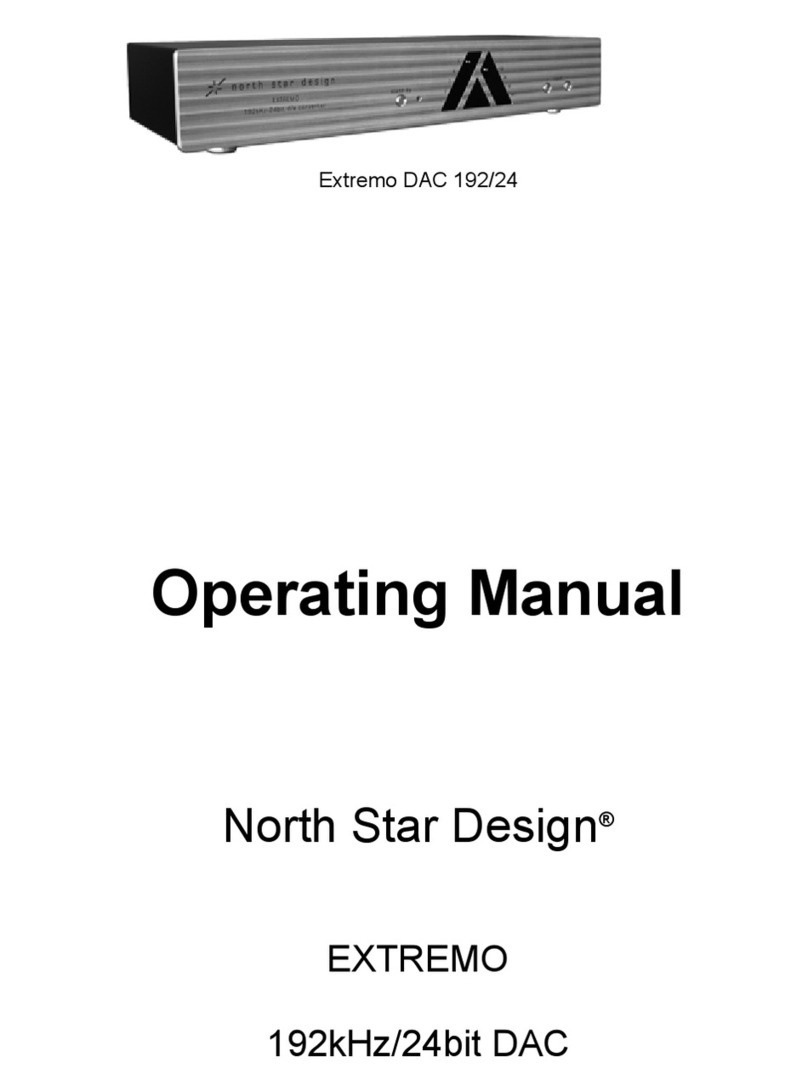
North Star Design
North Star Design Extremo operating manual
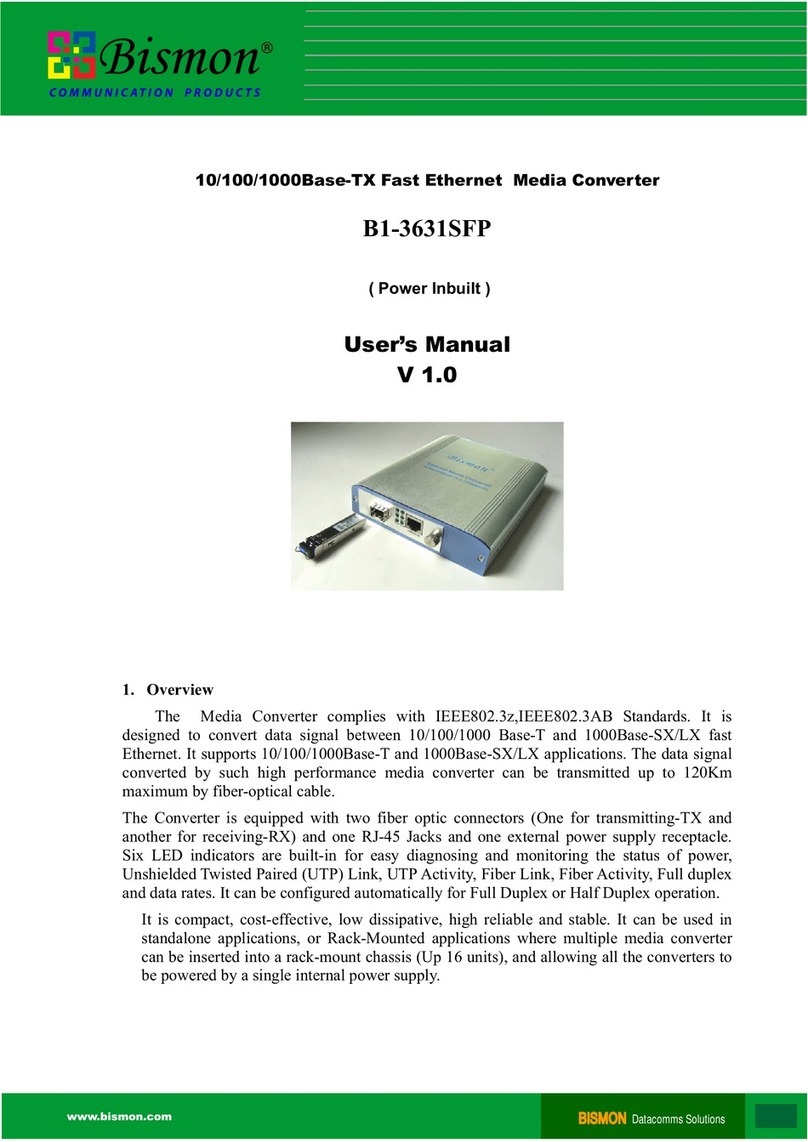
Bismon
Bismon B1-3631SFP user manual
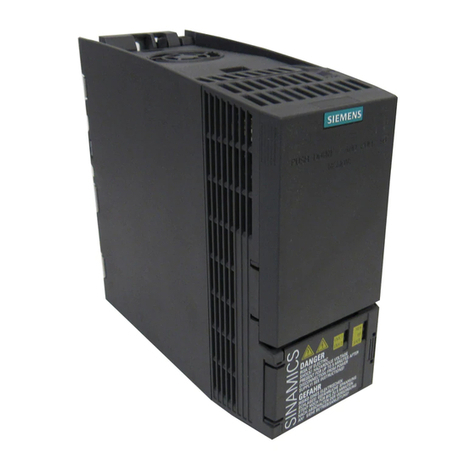
Siemens
Siemens SINAMICS G120C Getting started
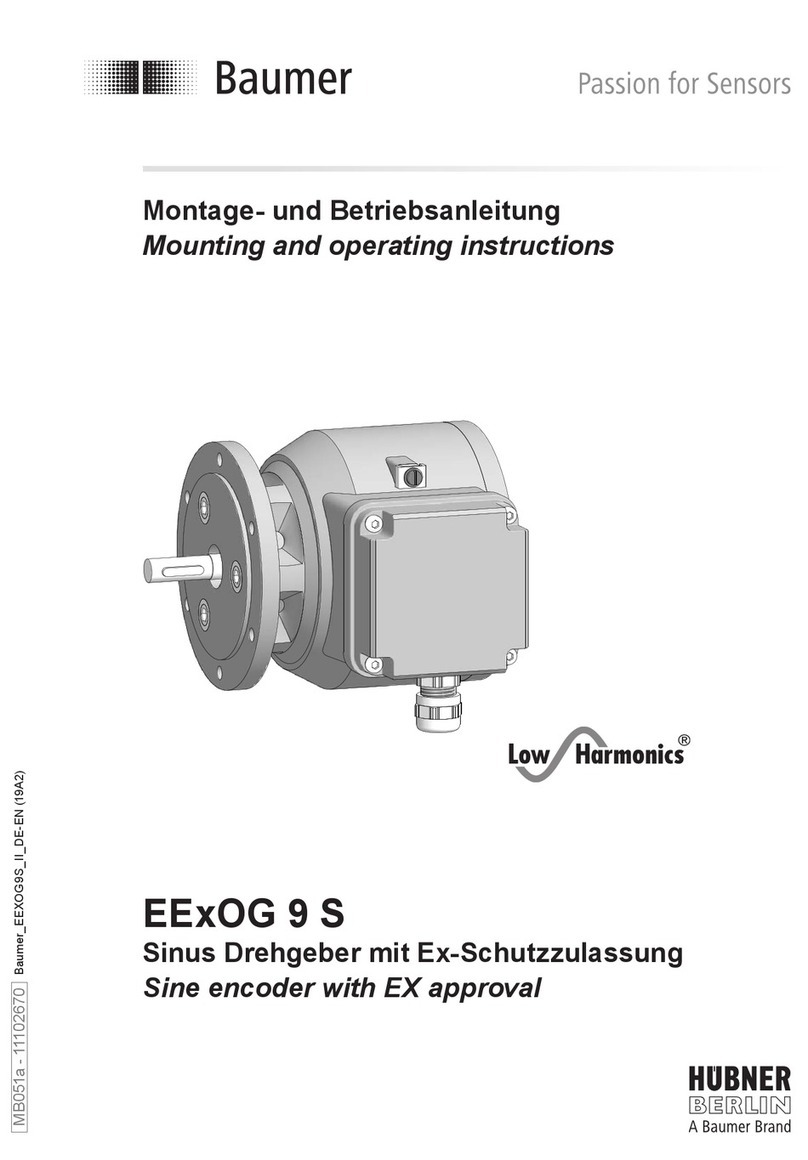
Baumer
Baumer HUBNER Low Harmonics EExOG 9 S Mounting and operating instructions
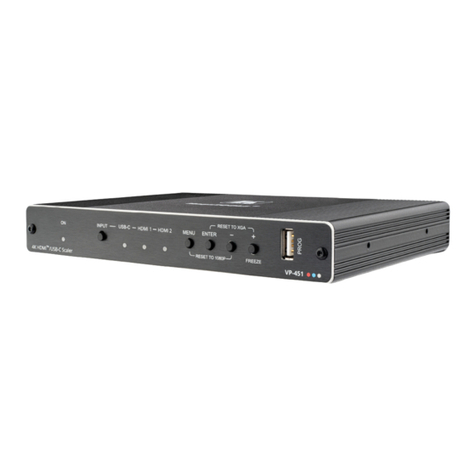
Kramer
Kramer VP-451 quick start guide
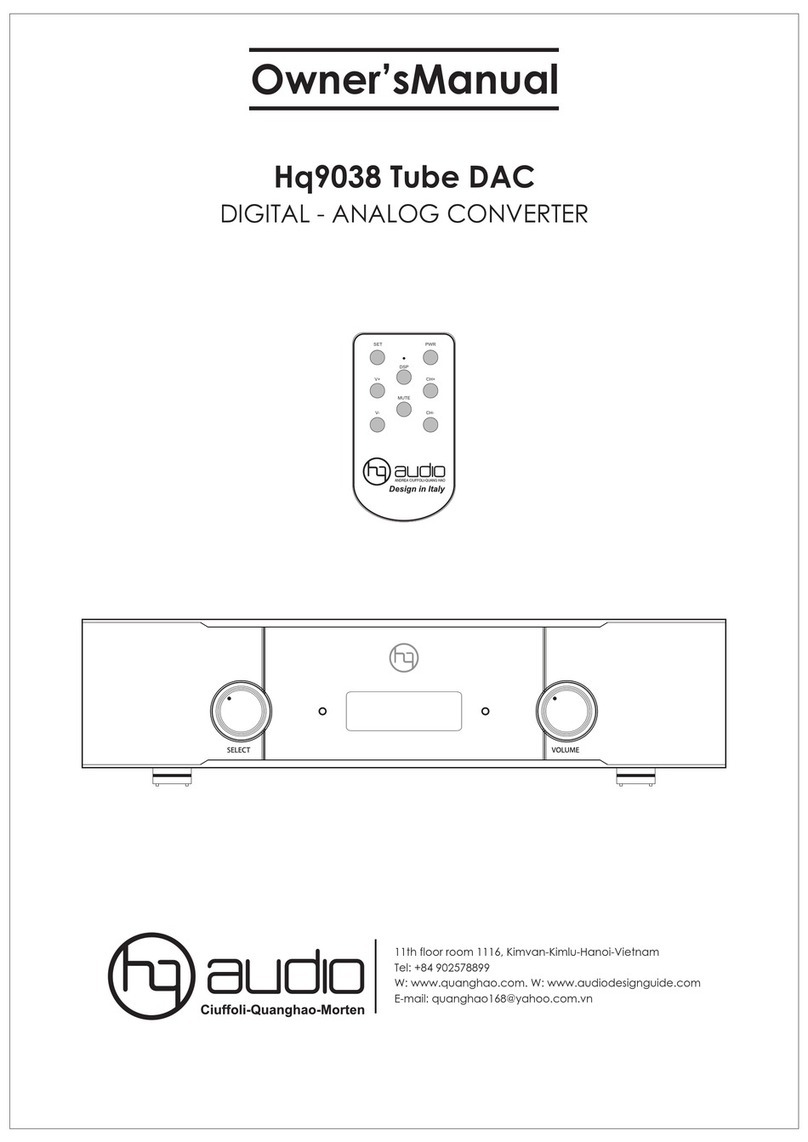
HQ Audio
HQ Audio Hq9038 Tube DAC owner's manual
